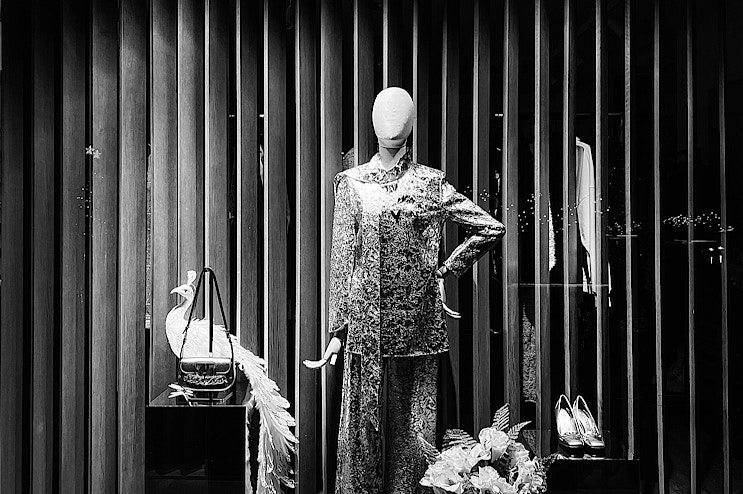Smell is the sense most closely linked to memory and emotions. A scent can evoke a memory with surprising precision, bringing to mind places, people, and past experiences. In retail, scent marketing is now a well-established and widely used strategy, especially by brands that aim to create an immersive experience. Luxury boutiques, hotels, fashion chains, and even supermarkets use fragrances to build a recognizable identity and influence purchasing decisions.
But how does it work, and how can this strategy be put into practice to achieve a real impact in the store?
Scent Marketing: what is it and how does it work?
Scent marketing is a branch of emotional marketing that harnesses the power of fragrance to create an engaging atmosphere and influence the customer experience. Just like music, lighting, and décor, scents help shape the character of a space, transforming it into a place capable of evoking specific sensations. Nothing is left to chance: each fragrance is selected based on brand identity, type of business, and the desired effect on the visitor.
Its impact goes beyond simple olfactory pleasure. Scents interact with the limbic system, the part of the brain that processes emotions and memories, subconsciously influencing brand perception and buying behavior. Strategies vary depending on the goal:
- Scent design shapes the environment: a fragrance is chosen to align with the style and values of the space, enhancing the sensory experience, much like lighting or background music. Ideal for showrooms, hotels, or representative spaces.
- Olfactory signature is like an invisible logo: a custom-made fragrance that becomes recognizable and exclusively associated with the brand. Often used in flagship stores or boutiques aiming to stand out and leave a lasting impression.
- Targeted scenting has a more practical goal: to trigger specific behaviors, like impulse purchases or extended time spent in-store. Think chocolate scents in a bakery or ocean notes in a spa.
Scent marketing therefore goes beyond making a space smell pleasant—it transforms it into a full sensory experience that engages customers on a deeper level.
Why is smell so important in retail?
The connection between smell and emotions is immediate: a well-chosen fragrance triggers positive memories and creates an atmosphere conducive to buying.
Several studies have shown that customers are more likely to enter a store if they detect a pleasant scent that matches the environment, while an unpleasant odor or lack of a scent signature may shorten their stay, lowering the likelihood of a purchase. The sensory experience becomes a real competitive factor, capable of differentiating the brand and reinforcing its identity.
Scent marketing offers numerous benefits:
- Attracts more customers: An inviting fragrance draws people into the store with greater curiosity.
- Increases dwell time: A carefully scented environment enhances the experience, encouraging customers to explore the space more thoroughly.
- Improves product perception: Items displayed in a scented environment consistent with the brand are perceived as more exclusive and desirable.
- Boosts sales: Emotions influence purchases, and a well-calibrated fragrance can promote more spontaneous buying decisions.
- Strengthens brand identity: A recognizable scent signature creates a sensory connection with the customer, increasing brand recall.
- Conveys cleanliness and care: A fresh, balanced scent communicates attention to detail, enhancing comfort and customer trust.
Examples of Scent Marketing: choosing the right fragrance
Every brand communicates through a language made up of colors, materials, and sounds but also through scents. When a fragrance becomes an integral part of a company’s identity, it doesn’t just accompany the purchas it becomes a distinctive signature capable of leaving a lasting memory.
Some sectors have already embraced scent marketing as a strategic asset:
- Luxury brands use sophisticated fragrances that evoke exclusivity and elegance. Tiffany & Co., for example, welcomes customers with a light scent based on white musk and iris, while Abercrombie & Fitch stores are known for their iconic “Fierce” fragrance, with woody and citrus notes that have become a distinctive part of the shopping experience.
- Youth fashion brands go for fresh and dynamic scents. Victoria’s Secret, in addition to selling perfumes, diffuses notes of vanilla and exotic fruits in its stores to create a sensual and lively atmosphere, perfectly aligned with the brand.
- Wellness-focused sectors, such as spas, hotels, and cosmetic stores, choose relaxing fragrances. Ritz-Carlton uses white tea and citrus notes to convey elegance and comfort, while some spas diffuse lavender and eucalyptus aromas to promote relaxation and well-being.
- Bakeries and coffee shops play with fragrances that stimulate appetite and purchase desire. Bakeries like Paul or Starbucks capitalize on the scent of freshly brewed coffee and vanilla to create a cozy and inviting experience, encouraging customers to stay longer and order more.
How to create a scent experience in your store
The effectiveness of scent marketing depends on how the fragrance is integrated into the space. Each scent must be chosen with a specific goal, aligned with the brand identity and the emotions to be evoked. This requires a strategic approach, considering several factors.
1. Define brand identity based on target preferences
The fragrance must be consistent with both the brand’s identity and the audience it targets. These two elements go hand in hand: a high end women’s fashion brand, for instance, can reinforce its image with floral or powdery notes that speak to its audience and convey elegance. A men’s atelier with a bolder position might opt for spicy or woody scents that evoke character and sophistication. Likewise, a jewelry store aiming for a delicate and “luminous” tone might favor white musk or rose notes, while a brand with a more daring identity could experiment with oriental or resinous accents. In every case, olfactory consistency is what makes the in-store experience credible: the scent doesn't need to appeal to everyone, but it must speak directly to the kind of customer you want to attract.
2. Create a distinctive scent signature
If scent can become a central branding element, like a logo or recognizable design, it’s advisable to personalize your scent signature. An exclusive fragrance helps customers immediately associate an emotion with the brand, enhancing the shopping experience. To achieve this, brands can collaborate with expert perfumers to develop unique scents that characterize the brand unmistakably.
3. Manage intensity and distribution
A solid scent strategy requires attention to both the intensity and distribution of fragrance in the space. The goal is to create an identifiable yet non-invasive atmosphere, where the scent is discreet, constant, and adjusted to different areas of the store.
To achieve this effect, it's essential to select appropriate diffusion systems: controlled-release technologies, for example, adjust intensity based on foot traffic or room size, maintaining olfactory balance without excess.Varying fragrances based on the function of the space helps create a genuine sensory journey that guides the customer and reinforces brand identity at every moment. At the entrance, light and welcoming notes invite customers in and make them feel at ease, while in more private areas or those dedicated to premium products, more intense and enveloping accords can be used to convey exclusivity and enhance the purchase experience.

4. Extending the scent experience beyond the point of sale
Scent marketing can accompany the customer even after a purchase. Applying fragrance to shopping bags, packaging, or promotional materials helps reinforce brand identity, leaving an olfactory imprint that extends the experience over time. Some companies scent fabrics in packaging, brochures, or gift boxes, transforming every detail into an extension of the in-store experience.
Jo Malone, for example, scents its packaging and gift bags, while high-end fashion brands include samples of their fragrances in parcels, turning every purchase into a complete sensory experience.
The power of scent identity
Creating a scent signature offers a concrete strategic advantage. A carefully designed fragrance becomes a distinctive mark that strengthens the bond between brand and customer. The sensory experience imprints itself in memory and becomes an instant reminder of the brand’s identity, increasing recognition and loyalty.
This strategy, used by major brands, can also be successfully applied by smaller businesses as long as the fragrance chosen aligns with the brand and the emotions it wants to convey.
If you’ve ever entered a store and smelled something that evoked an emotion, you’ve already experienced the power of this strategy. Now the question is: what scent impression do you want to leave in your customers’ memory?






